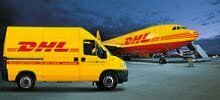 The Deutsche Post DHL Group, commonly known as DHL, is a Bonn, Germany-based logistics company that employs 500,000 people. It does business in 220 countries — a company that moved 4.6 million parcels and 59 million letters each working day in 2017.
The Deutsche Post DHL Group, commonly known as DHL, is a Bonn, Germany-based logistics company that employs 500,000 people. It does business in 220 countries — a company that moved 4.6 million parcels and 59 million letters each working day in 2017.
In that year, DHL set out to become the climate leader among its peers — something it refers to as its “GoGreen” journey. To that end, its goal is to cut its logistics-related emissions to zero by 2050. It’s a major challenge: more than 97% of its carbon emissions are tied to package deliveries. It has started investing $7.5 billion to reach this goal — and will continue to do so until 2030.
“In 2017, the group’s total annual carbon emissions amounted to 28.44 million tons of CO2 equivalent – meaning that eliminating the logistics-related emissions would be roughly comparable to cutting the emissions from the entire city of Las Vegas, USA,” says a blog by the We Mean Business Coalition.
Why is this important to DHL? Consider that the World Economic Forum says that the increase in e-commerce will need 36% more delivery vehicles. That, in turn, will create 32% more carbon emissions. DHL is therefore committed to zero-emission logistics fleets. That includes both air and ground transport. It will add a lot more hydrogen trucks and electric vehicles and use airplanes that can run on sustainable aviation fuels.
The Challenge
DHL sets a baseline of 2007. It has an interim goal of increasing carbon efficiency by 50% by 2025. One of the ways it will achieve this goal is to operate 70% of its long-haul trucks and delivery vans using clean fuels or bicycles. Specifically, that means using electric vehicles and bikes in densely populated urban areas. Furthermore, the logistics company will plant one million trees each year — nature's way of sucking CO2 out of the atmosphere.
DHL will use the science-based target initiative to achieve the goals set by the Paris climate agreement. It aims to limit its emissions so that temperature increases do not rise more than 2 degrees Celsius compared to the pre-industrial era. Those are the terms of the 2015 Paris agreement.
“When we wanted to update our fleet with electric delivery vans in 2011 we couldn’t find anything suitable in the marketplace, so we created our own,” says Birgit Hensel, Vice President of Shared Value for the logistics company in an interview with the We Mean Business Coalition.
For example, DHL came up with a four-wheel e-vehicle that it calls a StreetScooter. It’s been using it since 2015 in Europe — a product that it now sells to third parties. DHL uses more than 6,000 of these scooters, which cost 60%-80% less to operate and which have 60%-80% less maintenance.
It also uses something it calls, “cubicycles" to deliver packages in urban areas. Those are electric cargo bikes that have a container on the back. DHL says that three of these bikes can replace two vans that run on gasoline. Some of the drivers say they prefer e-bikes because it keeps them fitter and because they are much easier to park.
The Results
Importantly, DHL says that it will increase its use of sustainable aviation fuels, design all new buildings carbon neutral, offer a comprehensive portfolio of green products, and electrify 60% of our last-mile delivery. By 2030, it will have more than 80,000 e-vehicles on the road. Its $7.5 billion commitment — an amount that it is making in increments until 2030 — will pay for it all.
“We are currently operating 28% of first mile and last mile services with clean transport solutions, which is well on the way to our target of 70% by 2025. We have also increased carbon efficiency by 32%, compared to 2007 levels, as part of our target to increase carbon efficiency by 50% by 2025,” DHL’s Hensel told We Mean Business.
When DHL first set its GoGreen target in 2007-2008, the goal was to become 30% more efficient by 2020. But it blew past that threshold in 2016. That prompted the company to set even more ambitious targets — to reduce all transport-related emissions to zero by 2050.
Aviation will be a focal point for the company. It is the largest source of greenhouse gas emissions in the logistics business. It’s also the place where the company can save the most money.
“Sustainable Aviation Fuels offer a viable alternative to fossil fuels for powering commercial aircraft with significant potential to reduce aviation's greenhouse gas emissions,” DHL says. Furthermore, we will electrify 60% of our last-mile delivery vehicles by 2030.”